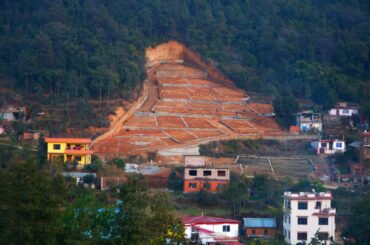Remittances in Nepal have long been a vital component of it’s economy, fueling everything from daily consumption to large‑scale investments. In fact, for many Nepalese families, money sent home by relatives working abroad isn’t just financial support—it’s a catalyst for transforming communities and reshaping the real estate landscape. In this article, we explore the pivotal role remittance plays in Nepal’s growing real estate market, the patterns it creates, and the opportunities and challenges it brings.
Table of Contents
- 1. Introduction
- 2. Overview of Remittances in Nepal
- 3. How Remittances Drive Real Estate Demand
- 4. Remittance‑Driven Investment Patterns
- 5. Opportunities in the Real Estate Market
- 6. Challenges and Considerations
- 7. Strategies to Leverage Remittances in Real Estate Investment
- 8. Future Outlook and Trends
- 9. Conclusion
1. Introduction
Nepal’s economy is heavily supported by remittances—the funds sent home by Nepalese working abroad. These funds are not only crucial for everyday household expenses but also serve as seed capital for investments in education, business, and notably, real estate. As the property market in Nepal continues to grow, understanding the connection between remittance inflows and real estate trends is essential for both local investors and non-resident Nepalese (NRNs) looking to build wealth back home.
2. Overview of Remittances in Nepal
Remittances are a cornerstone of Nepal’s economic stability. With millions of Nepalese living and working abroad in countries such as the Middle East, the US, Australia and Europe, the inflow of money sent back home consistently contributes a significant share to the national GDP. Key points include:
- Economic Impact: Remittances in Nepal account for a major portion of it’s GDP—often exceeding 25%.
- Household Investments: Many families use these funds not only for daily needs but also to invest in assets like property, which provides long‑term financial security.
- Market Confidence: Continuous remittance inflows in Nepal bolster confidence in local real estate markets, driving demand for both residential and commercial properties.
These trends illustrate why remittance is a powerful driver in the Nepalese property market, influencing buying decisions and market dynamics.
3. How Remittances Drive Real Estate Demand
Remittance inflows directly influence the real estate market in several ways:

Increased Purchasing Power
- Homeownership: With extra funds coming from abroad, many families are now in a position to purchase their first home or upgrade to a better property.
- Down Payments: Remittances often serve as the initial capital needed for down payments, making property purchases more accessible.
Catalyzing Market Activity
- Investment in Infrastructure: Regions with high remittance inflows tend to see better local infrastructure, which in turn raises property values.
- Urban and Suburban Growth: As families invest in properties using remittance funds, urban areas—especially the Kathmandu Valley—and emerging suburban regions witness increased real estate activity.
Boosting Rental Markets
- Rental Demand: NRNs who own property but live abroad often rent out their homes. This contributes to a steady rental market and creates a stream of passive income for investors.
- Tourism Connections: In tourist-centric areas, remittance-funded investments can boost the hospitality sector through rental accommodations and short-term leases.
Therefore, by understanding these dynamics, it becomes clear how remittances are a key force behind property demand in Nepal.
4. Remittance‑Driven Investment Patterns
Investments fueled by remittance typically follow distinct patterns:
Focus on Affordable and Mid‑Range Properties
- Broad Market Reach: Remittance is often directed toward affordable housing segments. Hence, this allows a larger number of families to enter the property market.
- Market Stabilization: By increasing demand for mid‑range properties, remittances help stabilize property prices and foster balanced market growth.
Investment in Emerging Regions
- Decentralization: While urban centers like Kathmandu continue to attract significant investments, remittance funds also drive growth in emerging suburban and rural areas.
- Rural Revitalization: In regions where land prices are lower, remittance‑backed investments help in the development of new communities, infrastructure, and local businesses.
Long-Term Wealth Accumulation
- Capital Appreciation: Properties purchased with remittance funds often appreciate over time. Moreover, this provides families with both immediate utility and long‑term financial security.
- Intergenerational Wealth: Many NRNs view real estate as a legacy investment. In fact, this type of investment can be passed down through generations, preserving familial wealth.
These patterns demonstrate that remittance is not only a short‑term financial support mechanism but also a catalyst for long‑term economic development in the real estate sector.
5. Opportunities in the Real Estate Market
The continuous inflow of Remittances in Nepal creates several lucrative opportunities in real estate market:

Enhancing Housing Quality
- Modernization Projects: Investors are increasingly focusing on modern, energy‑efficient housing developments.
- Sustainable Architecture: There is a rising trend toward eco‑friendly constructions that use sustainable materials, an aspect that appeals to both local buyers and NRNs.
Diversification of Investment Options
- Residential and Commercial Mix: The real estate market offers diverse opportunities—from high‑quality apartments to commercial spaces in urban areas—catering to various investment goals.
- Luxury and Affordable Segments: Remittance allows for investments in both luxury and affordable housing, ensuring market inclusivity.
Rental Income and Property Management
- Growing Rental Market: With many NRNs preferring to rent out their properties, the rental market has expanded, offering investors a consistent source of income.
- Professional Management: The rise of property management services ensures that investors can manage their properties efficiently from abroad.
These opportunities highlight how remittance inflows are not just supporting home purchases but also driving overall market modernization and diversification.
6. Challenges and Considerations
Despite the positive impact of remittances, there are challenges that investors must consider:

Market Saturation
- Overcrowding in Urban Areas: As remittances drive increased investments, certain urban areas may become oversaturated. This can lead to high competition and hence, potential lower yields.
- Regional Disparities: While urban centers thrive, some rural areas may not see the same level of infrastructure development. This, in fact, can affect long‑term property values.
Regulatory and Legal Hurdles
- Complex Ownership Laws: Foreign investors and NRNs often face complicated legal procedures when purchasing property, especially concerning freehold land.
- Documentation Requirements: Navigating the documentation and legal processes can be challenging without the help of experienced local professionals.
Economic Fluctuations
- Currency Volatility: Remittances are subject to exchange rate fluctuations, which can affect the overall investment value when converting funds to Nepali Rupees (NPR).
- Global Economic Trends: Changes in global economic conditions or shifts in migration patterns can impact remittance inflows and, consequently, the property market.
Being aware of these challenges helps investors develop robust strategies to mitigate risks when leveraging remittance funds.
7. Strategies to Leverage Remittances in Real Estate Investment
Investors can adopt several strategies to maximize the benefits of remittance in the real estate market:
Conduct In‑Depth Market Research
- Utilize Market Reports: Leverage research from trusted sources such as InvestAsian, HousingNepal, and local real estate platforms.
- Monitor Trends: Keep an eye on property price trends, government policies, and remittance inflow data to identify the best investment opportunities.
Partner with Local Experts
- Legal and Financial Advisors: Engage local professionals who understand Nepal’s regulatory environment.
- Real Estate Agents: Work with experienced agents who can provide insights into emerging hotspots and negotiate favorable deals.
Diversify Your Portfolio
- Residential and Commercial Mix: Invest in a range of properties to spread risk.
- Geographic Diversification: Consider both urban centers and emerging suburban or rural areas to capture growth across different regions.
Plan for Long‑Term Investment
- Focus on Legacy: Look for properties that offer long‑term value appreciation and can serve as a legacy for future generations.
- Rental Income: Consider properties that can generate rental income, which may provide steady cash flow to reinvest in the market.
Implementing these strategies can help investors effectively utilize remittance funds and secure profitable real estate investments in Nepal.
8. Future Outlook and Trends
Looking ahead, the role of remittance in Nepal’s real estate market is expected to grow even more significant. Key trends include:
Continued Urbanization and Infrastructure Development
- Government Initiatives: Ongoing infrastructure projects and government incentives will likely further boost property demand, particularly in urban and semi‑urban areas.
- Technological Advancements: The increasing use of digital platforms for property transactions will improve market transparency and accessibility for overseas investors.
Shifts in Investment Patterns
- New Hotspots: As urban centers expand, new investment hotspots may emerge in previously overlooked areas, driven by affordable property prices and improved infrastructure.
- Sustainable Investments: Growing environmental awareness will lead to more investments in green and energy‑efficient housing developments.
Impact of Global Economic Conditions
- Currency and Economic Fluctuations: Investors will need to remain vigilant about global economic trends and currency volatility, which could affect remittance inflows.
- Diaspora Engagement: With enhanced policies and improved legal frameworks, more NRNs may choose to invest in Nepal, further driving market growth.
The future looks promising, but a balanced approach—combining strategic investments, robust research, and local partnerships—will be key to harnessing the full potential of remittance in the real estate market.
9. Conclusion
Remittances are more than just financial transfers; they are a driving force that transforms communities and catalyzes economic development in Nepal. By infusing capital into the real estate market, remittances have increased purchasing power, boosted market activity, and spurred long‑term investments. While challenges such as regulatory hurdles and economic fluctuations exist, strategic planning and local partnerships can help investors navigate these complexities.
For NRNs and international investors alike, understanding the role of remittance in Nepal’s real estate market is essential for making informed decisions. Hence, with careful research, sound financial planning, and a commitment to leveraging local expertise, you can tap into the immense potential of Nepal’s property market and secure lasting financial growth.
Suggested Reads:
- Why Real Estate is the Best Investment Option for Nepalese Abroad
- A Step‑by‑Step Guide to Investing in Property in Nepal







